By Luke Rosen
Susannah does not wear pajamas to bed, she wears battle gear. After her bath is finished, teeth brushed, stories read and songs sang, it is time for the grueling marathon that is Susannah’s rare, nocturnal epilepsy. Her nine-year-old brother, Nat, flies into the bedroom like Superman and hugs her tight. “Night Shasha!”
Before he flies back upstairs to save the world, Nat asks which one of us will sleep with Susannah tonight. We answer with a smile. Our remarkable son is too kind to ever let on, but we see it in his eyes. He would do anything to have both parents to himself just for one night.
And he’s off.
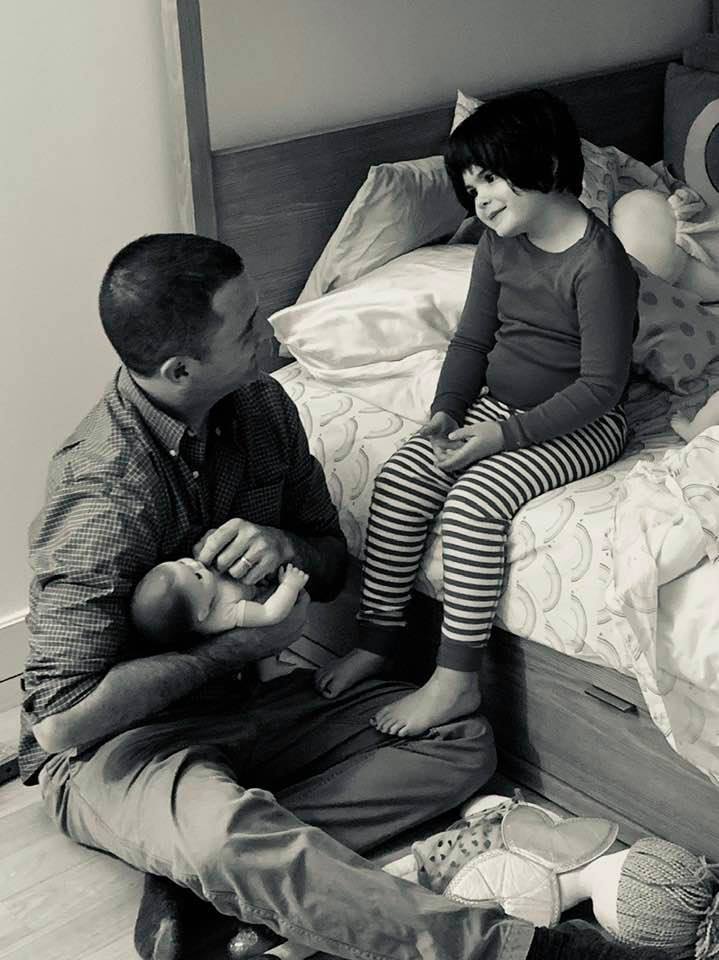
I kiss Susannah, tell her I am proud of everything she does, and that I love her too much to even say. Sally softly sings again, and we wait anxiously as Susannah’s heavy brown eyes fall closed. And like that, our little girl is off to battle. When Susannah falls asleep she does not journey into dreams of Rapunzel’s tower or Elsa’s castle. Instead, her brain slips into a nightly firestorm of continuous spikes, waves and seizure-like activity. A neurological nightmare that some children never wake up from. For the next ten hours our girl’s life is extremely fragile.
When Susannah was diagnosed in 2016, she was the only person known to have a rare neurodegenerative disease caused by one specific mutation (P305L) in the KIF1A gene. KIF1A is responsible for making a protein which is vital for brain function. Our daughter’s genetic anomaly triggers a constellation of medical complexities: movement disorder, cortical vision impairment, spasticity, brain atrophy, and epilepsy. At the age of two, she was diagnosed with a very rare form of epilepsy called Electrical Status Epilepticus in Sleep, or ESES. The severity of ESES is measured by percentage of seizure activity, or continuous electrical discharges in the brain captured only by EEG during sleep. At last count, 100% of Susannah’s sleep was filled with epileptic discharges. She has different types of seizures during the day, but this nocturnal epilepsy prevents Susannah from ever reaching the most crucial stage of sleep: REM.
Susannah’s epileptic encephalopathy is kindling to a potential forest fire in her brain. We watch her sleep, waiting for that match to strike and ignite a blaze. She twitches, and sweats like a marathoner throughout the night. Susannah’s breathing slows. Sometimes I wake her just to make sure those breaths have not slowed to a stop. Still, the most damaging outcome of these epileptic spikes in her brain is a complete lack restorative sleep. REM sleep is vital for brain development. It is that deep, wonderful sleep which yields recovery and alertness. REM is the stage of sleep when critical areas of the brain are stimulated. This sleep is responsible for skills like learning, memory, movement, energy and cognition. The REM stage of sleep is when we dream. Susannah never gets there.
KIF1A steals away steps, words and vision. These are measurable deficits, painful reminders that her disease is progressive — but tangible. We can count words and steps. We know when Susannah’s sight fails. Dreams, however, are magical and intangible events; intimate worlds far too complex to capture or describe in detail. Dreams are deliciously ambiguous, private secrets that inspire action. Is Susannah’s disease so ruthless that it robs children of the ability to dream too?
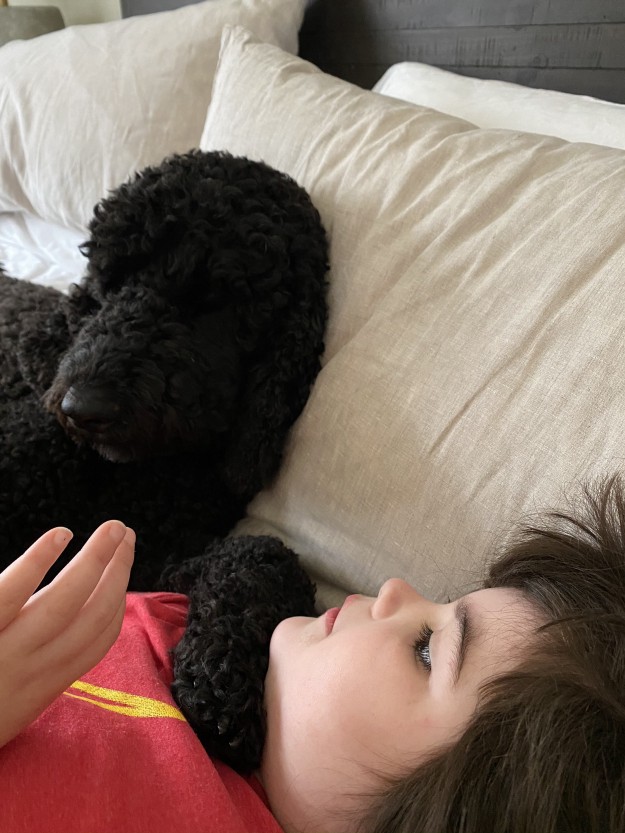
It is hard to describe the flood of panic when a doctor explained possible consequences associated with ESES, and lack of REM sleep: deteriorating neurons, dementia, loss of motor skills and speech. But Sally and I have heard it before. These outcomes are similar to the implications associated with her genetic condition. To fathom this future for any child is impossible, but the epilepsy part of her decline can be prevented if we dampen the fire inside Susannah’s sleeping brain.
Is it possible to address the severity of KIF1A Associated Neurological Disorder if we control the catastrophic seizure activity in Susannah’s sleep? If we race to find an effective medicine for her epilepsy, maybe we can slow the clock — a bandaid to buy her more time. Epilepsy is just one piece of her rare genetic disease. The seizure symptom of KIF1A compounds everything, and makes life so hard. Every hour of every day Susannah’s brain and body run on fumes because her nights are filled with epileptic firestorms. The tank empties more with every dreamless night, and fatigue triggers severity in every aspect of her health: balance, vision, focus, speech, energy, spasticity, more seizures. All parts of KIF1A made worse by ESES. In the morning, after her marathon of spikes and waves, acute battle fatigue sets in, and it is our job to activate the neurons in Susannah’s brain and get her body moving.
The list of medical emergencies is not what makes me cry after her brown eyes close at night. What continuously breaks my heart is that I know Susannah’s disease prevents her from having dreams. Our daughter never gets to dream; never gets to wake up with that carefree feeling of returning from an indescribable magical journey of dreams filled with flying unicorns. Instead of “sweet dreams” we kiss Susannah on the forehead, tell her we love her, smile with deceptive confidence and tuck her in. We sing her to sleep, then she closes her eyes and goes through hell.
Like most parents, if I had one wish, it would be for my children’s dreams to come true. When my son wakes up, I ask him what he dreamed about. Some mornings it was playing second base in the big leagues, and other mornings he describes buildings he designed, and his dream to be an architect — or a superhero jumping from those buildings to save people. It is so beautiful to hear him unpack those dreams. When I ask Susannah what she dreamed about last night, we have a fleeting moment of hope, a sliver of hope that today she will rattle off whatever dreams may have come the night before. Instead, she looks at me with glassy round eyes and smiles. A pause before she works hard to find words; words that once were easier for her to recall. I hug her tight.
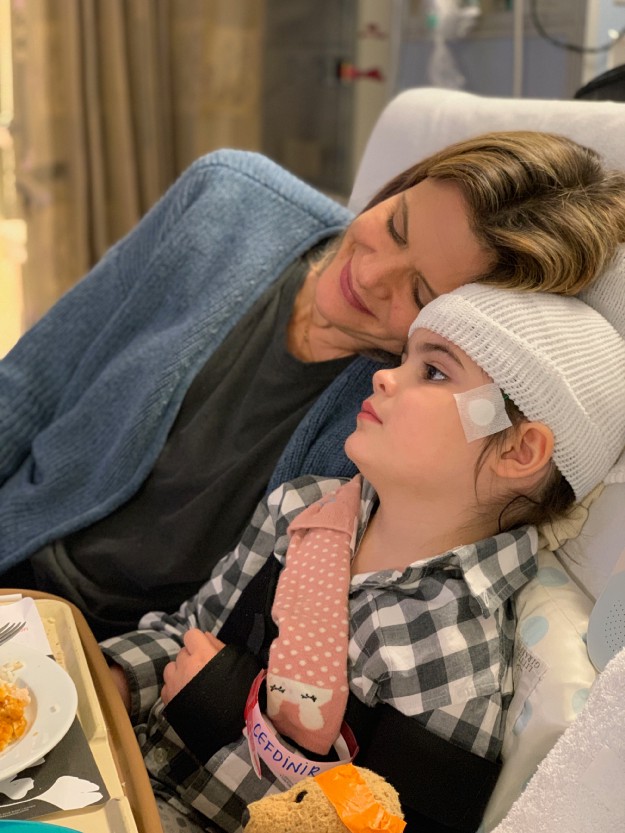
If there was one magic pill, a pill that could cure only one of the myriad challenges our sweet girl lives with, what would it be? If only one part of her devastating disease could be treated, what would I choose? I would not choose a pill to help her walk or see. If there was only one part of this damn disease that we could cure, I would choose a magic pill that gives Susannah the chance to dream. I would do anything for our girl to describe vivid dreams with enigmatic endings. Tales of running through castles and losing herself during a night of perfect sleep. I would be so lucky to appear as a character holding Susannah’s hand in the dreams she decides to share with us. Soon.
We work with doctors to find the right combination of medications, hoping for a temporary fix. With every EEG comes a new drug. A medicated rollercoaster of side effects in a monogenetic nightmare where clarity was fleeting long before we titrated up on the last benzodiazepine. We need new treatments today. Not tomorrow, not in one year or ten years. If we wait any longer nothing will come in time to help Susannah and kids like her. We are trying. It is a costly, life-altering burden to drive rare disease research — research which might go away if the lemonade stands stop and the funds run out. We need help to develop treatment before the damage is beyond repair. We need treatment that slows degeneration and makes Susannah’s life less severe.
Last night I was home alone with the kids for the first time in months. Sally was returning well after bedtime, so it was my night to sleep with Susannah. Nat asked if he could sleep in his sister’s bed, and Susannah sharply replied with a yell “slumber party!” The three of us climbed in, watched a movie and they fell asleep. Bliss. I slipped out of bed and went into the kitchen to begin tomorrow’s prep. Sally walked through the door a few hours later, and we found ourselves in the rarest of moments. It was nighttime. We were alone. Together. Rare because one of us always sleeps with Susannah while the other prepares for the chaos of tomorrow’s remote learning, therapies and work. It felt strange to be alone with my wife, but we took advantage of the moment and sat down to talk. We spoke like two people who had not talked in years, even though we are together more these days than ever before. During the last ten months we rarely see each other after the kids bedtime. Even with this tiny escape from routine, something felt off. We sat on the couch eating ice cream when Nat’s terrified voice called from the bedroom, “Dad get in here! Somethings wrong with Sus!” Snap back to reality. Sprint into the room.
Susannah was lying asleep covered in her own vomit and gurgling. Without hesitation, Sally picked her up, cleared the vomit from her mouth and Susannah woke up. She was in a midnight haze, weary from her march through the battlefield of seizure-filled sleep. Thanks to Nat’s slumber party and awareness, his sister did not aspirate or stop breathing last night.
Some nights Nat and I read Shakespeare after Susannah and Sally are in bed. I use funny voices, and he asks to hear the battle scenes again. Last week we read Macbeth. I thought of Susannah downstairs fighting an invisible enemy in her dreamless sleep. I read Macbeth’s lines:
Innocent sleep. Sleep that soothes away all our worries. Sleep that puts each day to rest. Sleep that relieves the weary laborer and heals hurt minds. Sleep, the main course in life’s feast, and the most nourishing.
In that moment, four years after her diagnosis, I understood Electric Status Epilepticus in Sleep. The impact of Susannah’s epilepsy was clear to me. As described by Shakespeare, Susannah’s rare epilepsy prevents sleep from healing her hurt mind; a mind hurt with atrophy caused by a rare and toxic genetic mutation in KIF1A.
No doctor explained ESES in this logical way. No medical journal educated me about Susannah’s specific form of epilepsy. Lying in bed, reading Macbeth to Nat in a funny voice, I finally understood our daughter’s epilepsy. Shakespeare explains the mechanism of Susannah’s disease with far more clarity than any neurologist. I read the lines again, Sleep that relieves the weary laborer and heals hurt minds. Sleep, the main course in life’s feast, and the most nourishing.
I looked at Nat, smiled and turned off the light. I was covered with a rare blanket of comfort, an overwhelming feeling that tonight Susannah will win the battle. Tonight Susannah will dream, and tomorrow she will tell me all about it. In her own way.
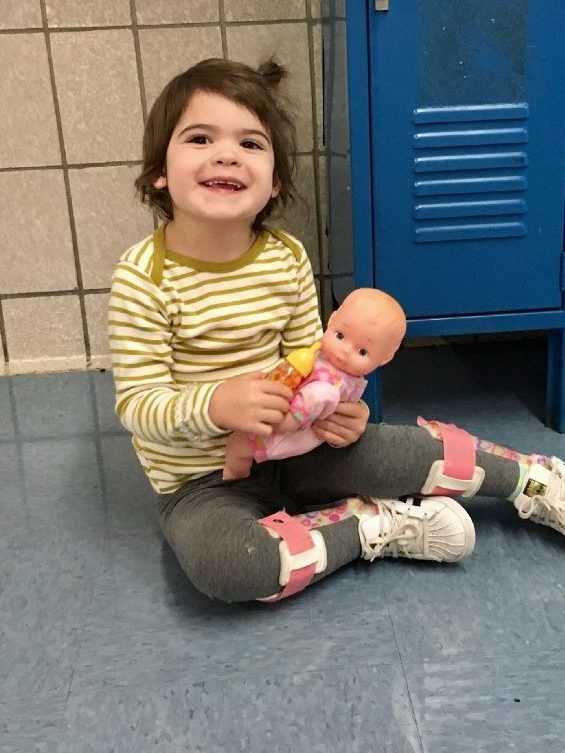

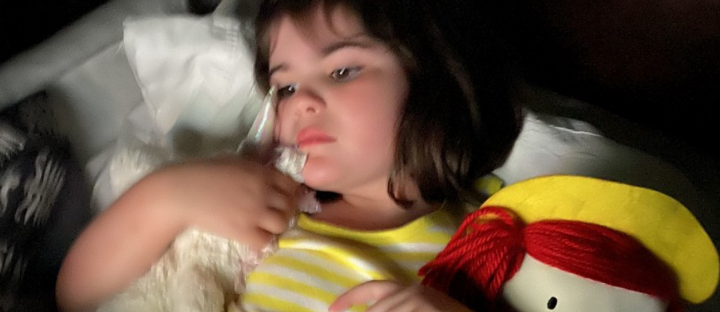
Thank you for helping me understand! This is a terrible little known disease and I hope for immediate help.
Luke, your beautiful words brought me to tears and I hope that Susannah will have dreams to share.
Please include me ( again) in your fund raising. I would like to help.
Dear Joan,
Thank you for the kind words. Your support means so much to us (both as a foundation and as a family) as we fight for our children’s dreams.
And since you asked…there will be a Facebook fundraiser coming up this week in recognition of Rare Disease Day 🙂 Please do take a look: https://www.facebook.com/KIF1A
Thank you for reading, for reacting, for helping, and above all, for caring. We appreciate it all.
How lucky for Susannah to be surrounded by the most loving family. The pain you feel for your daughter is almost palpable and tells so much about who you are. Your understanding of Susannah’s disease and your ability to describe it opens many doors for me and others. What moves me most is what you wish Susannah did not have to endure and the peace she will most likely never achieve. Is there anything I can do to ease Susannah’s path?
This article is heartbreaking! Our grandson also has Kif1a with similar and different maladies. Each day and night present challenges, defeats and moments of joy!! The demands on parents is relentless. Our daughter and son-in-law are also relentless in making Max Bowen’s life happy, comforting, and family oriented. Exhaustion is always there due to Max’s sleep disorder. They are challenged with physically caring for his near adult body. Brother and sister have had to make allowances in order to meet Max’s needs. Still, love abounds and blessings are counted. Prayers for your daughter and family. Thank you for sharing your story.
This is so beautiful, Luke. I will forever think of Susanna when I read those lines from Macbeth.
Thank you Luke for being so raw and real with your experience. Your words are powerful.
My thoughts are with you, Susanna, Sally, and Nat.
Hi! Just wondering how sus and the fam are doing after all this time!
We are watching your story in our biology classes. So heartbreaking but we are hopeful for your sweet Susanna! Thank you for sharing:)